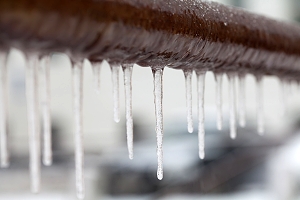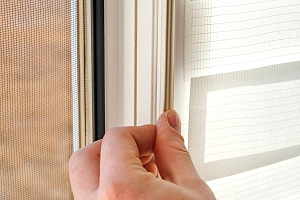Facing frozen pipes is not just an inconvenience; it can lead to extensive damage and costly repairs for homeowners. Preventive measures play a pivotal role in averting this winter nightmare. Let’s delve into more comprehensive strategies to safeguard your pipes from freezing, ensuring a hassle-free winter season.
Insulate Exposed Pipes
 Insulating exposed pipes is not merely a precautionary step; it’s a proactive measure that acts as a blanket of warmth for your plumbing, shielding it from the harsh embrace of freezing temperatures. Utilizing specialized pipe insulation serves as an effective thermal barrier, preventing heat loss and ensuring a consistent temperature within the pipes. Here’s a more detailed breakdown of this crucial process:
Insulating exposed pipes is not merely a precautionary step; it’s a proactive measure that acts as a blanket of warmth for your plumbing, shielding it from the harsh embrace of freezing temperatures. Utilizing specialized pipe insulation serves as an effective thermal barrier, preventing heat loss and ensuring a consistent temperature within the pipes. Here’s a more detailed breakdown of this crucial process:
Choosing the Right Pipe Insulation
Select high-quality pipe insulation materials that are designed for the specific needs of your plumbing. Options include foam, rubber, or fiberglass insulation, each offering varying degrees of protection. Choose insulation with an appropriate thickness to provide optimal coverage and thermal resistance.
Measuring and Trimming
Accurate measurement is paramount for ensuring the snug fit of insulation around your pipes. Measure the length of exposed pipes meticulously and cut the insulation material accordingly. The goal is to create a tailored covering that envelops the pipes seamlessly, leaving no room for cold air infiltration.
Wrapping Technique
Apply the insulation by wrapping it around the pipes carefully. Ensure that there are no gaps or overlaps in the insulation layers. Secure the insulation in place with adhesive strips or tape designed for this purpose. The goal is to create a robust barrier that effectively traps heat within the pipes, preventing them from succumbing to freezing temperatures.
Seal Gaps and Cracks
Your home’s defense against freezing temperatures extends beyond just the pipes themselves. Inspecting for gaps and cracks in walls, windows, and doors is a proactive approach that strengthens your home’s overall defense against chilling winds.
By identifying and sealing these openings, you create a more resilient barrier, ensuring a warmer environment for your pipes. Let’s delve into the detailed steps of this process:
Comprehensive Home Inspection
Conduct a thorough inspection of your home, paying close attention to areas where pipes are present. Check for gaps and cracks in exterior walls, window frames, and door frames. Even seemingly minor openings can contribute to cold drafts that may impact the temperature of adjacent pipes.
Weatherstripping Application
 Weatherstripping is a highly effective solution for sealing gaps around windows and doors. Choose weatherstripping materials that suit the specific locations you are addressing, such as adhesive-backed foam strips, V-strip, or door sweeps. Apply weatherstripping to the perimeters of windows and doors, creating a tight seal that prevents cold air infiltration.
Weatherstripping is a highly effective solution for sealing gaps around windows and doors. Choose weatherstripping materials that suit the specific locations you are addressing, such as adhesive-backed foam strips, V-strip, or door sweeps. Apply weatherstripping to the perimeters of windows and doors, creating a tight seal that prevents cold air infiltration.
Caulking for Structural Gaps
For larger gaps or cracks in walls and other structural elements, use caulk to fill and seal these openings. Silicone or latex caulk works well for such applications. Apply caulk along the gaps, ensuring a smooth and even seal. This step not only eliminates drafts but also contributes to energy efficiency throughout your home.
Exterior Inspections
Don’t forget to inspect the exterior of your home, including areas where pipes may be exposed to external conditions. Check for any gaps or cracks in the foundation, siding, or areas around utility penetrations. Seal these openings with appropriate materials to fortify the exterior against chilling winds.
Apply Heat Tape
For pipes in particularly vulnerable areas, consider using heat tape. This electrical tape produces consistent warmth, preventing pipes from freezing. Install it along the length of exposed pipes, especially those in unheated spaces like basements or crawl spaces. Heat tape is an excellent supplementary measure to insulation.
Close Foundation Vents
During the winter months, closing foundation vents can help limit the exposure of pipes in crawl spaces to frigid temperatures. This reduces the risk of freezing and promotes a more controlled climate around your plumbing. Open vents can allow cold air to circulate, potentially affecting the temperature of adjacent pipes.
Keep Interior Doors Ajar
Ensuring proper air circulation within your home is essential for maintaining consistent temperatures around your pipes. Keep interior doors ajar, allowing warm air to flow freely and reach areas where pipes are located. This simple practice contributes to a more uniform climate, reducing the chances of frozen pipes.
Install Pipe Heating Cable
Pipe heating cables are designed to provide targeted warmth to specific sections of your plumbing. Install these cables along vulnerable pipes, and they automatically activate when temperatures drop. This proactive approach ensures that critical areas of your plumbing receive additional heat, preventing freezing.
Add Extra Insulation to Attics and Basements
Well-insulated attics and basements contribute to an overall warmer home environment. By adding extra insulation to these spaces, you create a buffer against extreme temperatures that could affect your pipes. This comprehensive approach enhances the energy efficiency of your home while safeguarding your plumbing.
Let Faucets Drip
Allowing faucets to drip continuously during particularly cold nights is a practical method to prevent freezing. The constant flow of water, even at a minimal rate, reduces the risk of stagnant water within pipes freezing. This approach is especially effective for faucets connected to pipes along exterior walls.
Keep Your Home Warm
Maintaining a consistently warm temperature within your home is crucial for pipe protection. While lowering thermostat settings might save on energy bills, the cost of potential pipe damage far outweighs the savings. Prioritize the well-being of your pipes by keeping your home comfortably warm during winter.
A Proactive Approach to Pipe Protection
Taking these preventive measures significantly reduces the likelihood of experiencing frozen pipe nightmares. However, if issues arise, seeking professional help is paramount. Contact Dirt Connections for repairs, renovations, and remodeling.
Our experienced team ensures successful projects, from bathroom remodeling to new additions, providing quality work that stands the test of time. Benefit from our services, including free dirt delivery, site preparation, and dirt removal, to enhance your property. Reach out to us today to explore the various ways we can elevate and safeguard your home.








































